Decoding a decades-old photograph of my father
by George Quraishi | photograph by Ed Clough
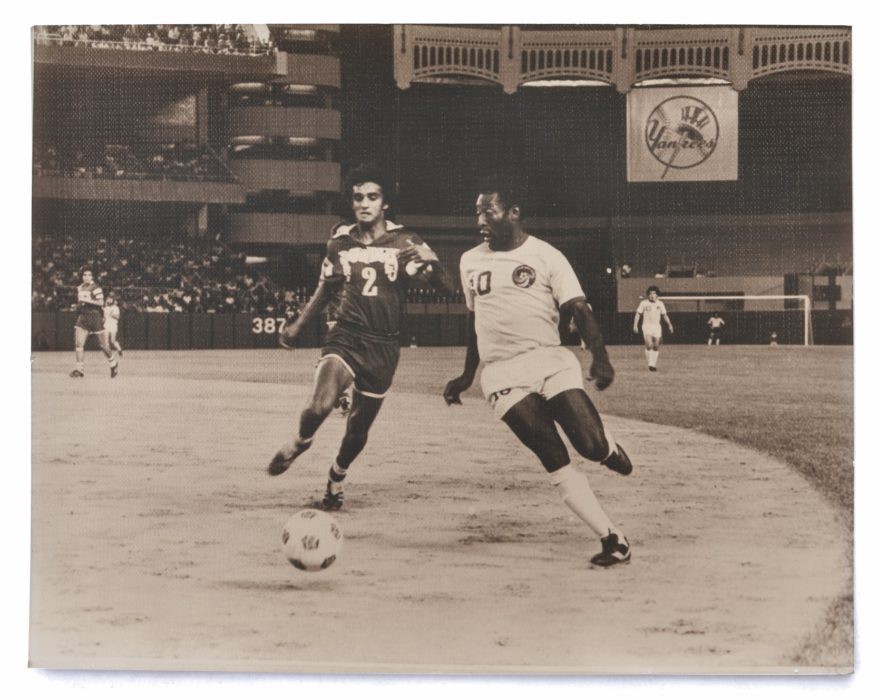
As an action shot, it’s nothing special, just two men running toward the camera. Before them: a soccer ball. Behind them: a New York Yankees banner strung from the stadium’s iconic frieze. Beneath them: infield clay. The men carry equal weight, in the language of photography, and when you’re a little kid, like I was, and you’re studying this picture of your father, like I did, that’s the primary layer of information: Dad, on the left, racing for the ball against some other guy. I used to wonder who got to it first.
My only source claimed he pushed the ball out for a corner kick. It took years of looking at the picture while coming down the stairs of the house where I grew up, but I finally thought to ask. When I told him it looked like Pelé was a step closer, he shrugged.
Later, flipping through channels at a friend’s place in New York, we see it: New York Cosmos vs. Tampa Bay Rowdies, Yankee Stadium. The date is July 14, 1976. There’s Farrukh Quraishi, №2, the right back, socks bunched at his ankles. This must be the game. We watch only a few minutes, but later I ask Dad what else he remembers.
We lost five to four, he says. In the first minute, Pelé took out Rodney Marsh with a tackle so late and so hard that it had to mean something. A month before, in Tampa, as the Rowdies rolled over the Cosmos five to one, Marsh had taunted his marker by kneeling behind the ball and spreading his arms wide, a show-off’s payback for 90 minutes of raked ankles.
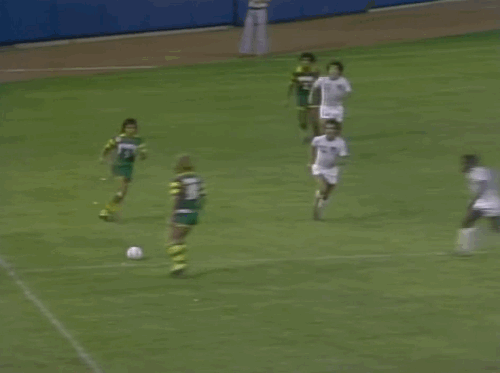
“We all knew that’s why Pelé went after him,” said Dad. “You don’t embarrass a fellow professional like that.” (That’s my dad in the background of the clip above, putting his hands on his head after the tackle.)
The framed photograph followed me from Brooklyn to Palo Alto to Memphis and back to Tampa. These days it hangs on my kitchen wall, above the key rack and underneath the hook that holds the dog leash. Now I know that Pelé is the photo’s central feature, but there’s another story in the clay, the banner, and the baseball stadium that is decodable only to those who know their soccer Americana. What I wanted to learn when I watched the game on YouTube last week was whether it might contain any other messages just for me. I was looking for clues, traces of what my dad was like in his mid-20s, as a player or as a person, a glimmer of the man I know now, who nods off five minutes into every game we watch together.
The Rowdies score an early goal and the Cosmos have two of their own called back for offside, but the game begins badly for №2. Quraishi brings down a Cosmos player in the box. The whistle blows and Marsh boots the ball over the outfield wall in frustration. Penalty kick, tie game.
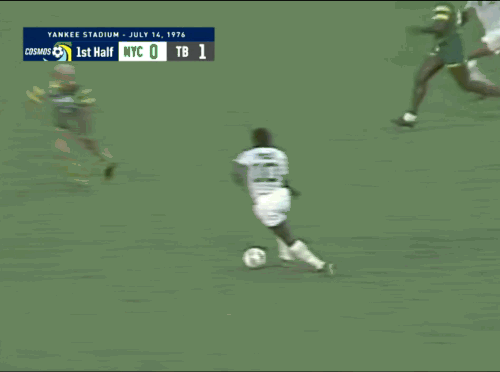
The Rowdies score two more, and then New York’s Bobby Smith takes the ball toward the Rowdies’ goal line, just outside the box. The announcer: “On the wing, Bobby Smith. And Smith taken down hard by Farrukh Quraishi. Here comes Gordon Hill, the referee, now, to talk to Farrukh. Did he get to the ball first, or did he hit the man?”
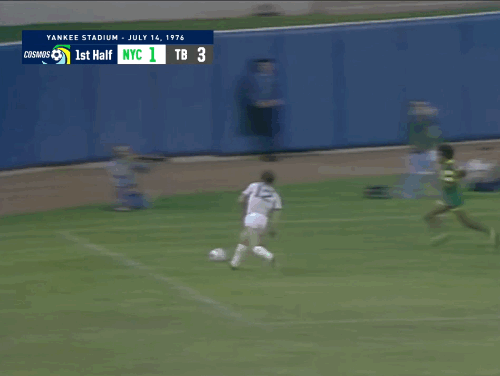
“I think it’s going to be a foul,” says Francisco Marcos, the color commentator and PR guy for Tampa Bay. “And of course, as I said the last time we played on TV in Miami, Tom, Farrukh is reading Winning Through Intimidation these days, so we’ll see what happens right now.”
Smith has sprung up and, in a funny reversal of sympathy, placed his hands affectionately on my dad as he walks out of frame. The referee arrives, checks the back of Dad’s jersey, and rests the yellow card on his thigh as he records the booking. №2 is standing with his hands on his hips and his head cocked, body language we still see each time a water glass falls victim to his clumsy reach or he flattens his thumb with a hammer. The free kick is wasted.
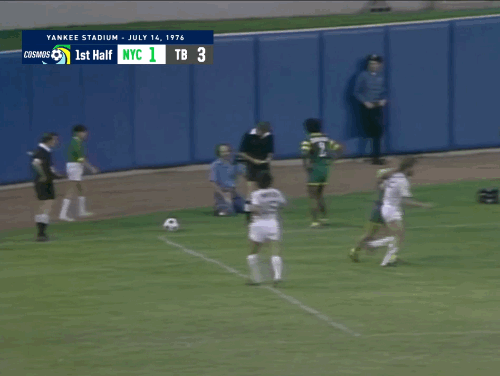
Later in the half, Quraishi jumps with Pelé and wins a header, which actually comes down on his forearm. No call. Then Pelé cuts down Marsh — the play Dad remembered as opening the game actually happened toward the end of the first half — and the Cosmos score four more goals. None, apart from the penalty, are directly attributable to №2. In fact, he makes neat passes and stops dangerous moves by the Cosmos, including a shoulder-to-shoulder battle with Giorgio Chinaglia that he clears from the box with a bicycle kick. (Though Tom in the TV booth credits Arsène Auguste, the Rowdies’ Haitian center back of similar skin color.)
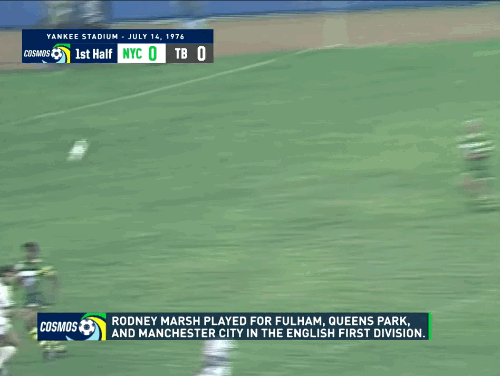
But the moment I’m looking for, the one in the photograph, eludes me. I know it happened in the second half, when the Cosmos were attacking toward the first-base line. But the game tape is an edit made years later; there are some hard cuts that leave no indication how much time has elapsed.
The photo belongs to a time before I was born and before the Internet created the illusion that the right search terms can reveal whatever information you seek. (It may be true that Robert Ringer’s Winning Through Intimidation was number one on The New York Times best-seller list for 36 weeks after it was published in 1973.) When I look at it now, I see what I already knew about my dad: he devoted his life to something and got close enough to the top that being photographed with Pelé meant less to him than the fact that he won the tackle. I’ll be surprised if the picture has anything else to tell me. But I keep looking at it anyway, marveling at the moment that my dad and Pelé converged on a soccer ball skipping across the infield of Yankee Stadium, marveling that there was a moment at all.



